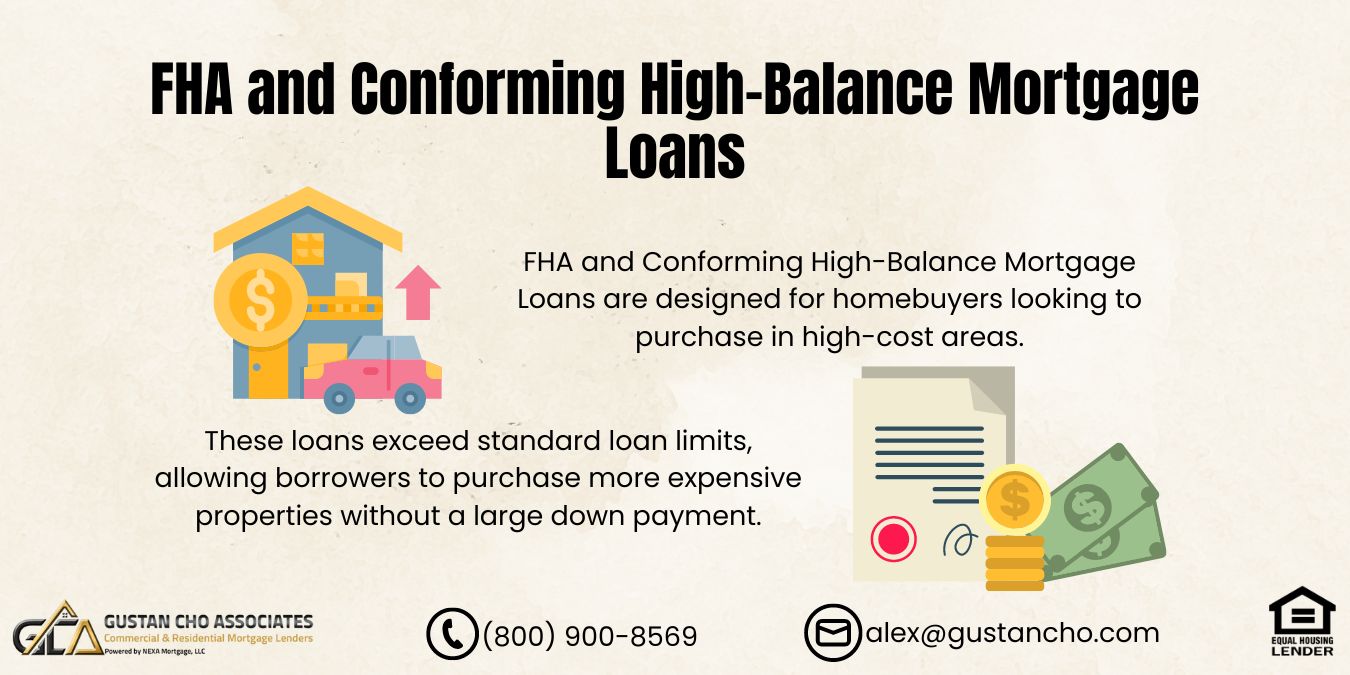
Randy
Loan OfficerForum Replies Created
-
Randy
MemberSeptember 14, 2024 at 4:05 pm in reply to: Gavin Newsom Vetoes 150,000 Housing Grant Bill For Undocumented ImmigrantsIn this case, after five years of repayment, a housing grant equal to the tenth year’s rent, a housing grant of one hundred and fifty thousand dollars will be given. Regarding the actual distribution of housing assistance programs in California, the person attempts to expand the range of federal programs that ‘illegal’ immigrants can benefit from within California. The legislation’s most desirable and risky elements are summarised in the following paragraphs. Among the important features of the bill grant amount, the bill raised seventy-five million dollars, particularly as down payment assistance to any qualified illegal immigrant wishing to purchase a residential property.
Eligibility: This program was thus aimed to put the exception in place, so that undocumented immigrants can access this fund as long as they meet some criteria, such as income threshold, and years of residency. Purpose: As illegal residents, they were yearning to buy homes that act as linkages to the structure of society and enhance the active participation of various cultures in established societies. Sources of Funding: These funds would be availed through state treasury disbursements and other bank contributions. There were Impact Goals: It targeted home ownership to the poor people in the community, thereby enhancing development in such areas and improving the living standards.
Everyone, or most of you, knows Insurance Alfred’s service context and problems, and Gavin Newsom refused this bill. This vote addresses the issues of illegal immigrants and the housing problems that are currently being faced in California.
Let’s say you want more elaboration on this particular update. Then, it is recommended that you utilize state sites or news articles that usually come with history.
-
Randy
MemberAugust 8, 2024 at 7:09 pm in reply to: What FICO Model do Lenders Look at For FHA LoansThanks, Gustan. Everything is going good as it could be. Having a hard time in Sarasota, Florida. Very tough real estate market for rentals. I appreciate your answer and it now makes sense. Thanks again.
-
Randy
MemberAugust 8, 2024 at 7:05 pm in reply to: What FICO Model do Lenders Look at For FHA LoansWhat Score Do Mortgage Lenders Use For a Home Loan?
-
We will provide the public information and biography of Kamala Harris, the current vice president of the United States and a candidate for president in the 2024 presidential election with former Republican President Donald Trump.
Early Life and Education of Kamala Harris
Birth: Kamala Devi Harris was born on October 20, 1964, in Oakland, California.
Parents: Her mother, Shyamala Gopalan, was an Indian breast cancer scientist. Her father, Donald Harris, is a Jamaican-American professor of economics.
Siblings: Maya Harris is a lawyer and public policy advocate who happens to be her only sister.
Grade School: She attended Thousand Oaks Elementary School in Berkeley, California.
High School: After her mom got a job teaching at McGill University, she went to Westmount High School in Montreal, Quebec, Canada.
College: Harris earned a Bachelor of Arts in political science and economics from Howard University in Washington, D.C.
Law School: Juris Doctor (J.D.) from the University of California Hastings College of the Law in San Francisco.
Professional Career
First Job: Deputy District Attorney Alameda County, California
Bar Exam: She passed on the second attempt of the California bar exam.
Private Attorney Experience: Kamala has never practiced privately as an attorney and has mostly worked for the public sector.
Early Political Involvement – In 2004, Kamala began holding prominent public offices, such as San Francisco’s District Attorney. Her passion for politics ignited during these years when she worked as a prosecutor and advocated reforms within criminal justice systems.
Political Career:
California Attorney General – Elected 2010, becoming the first woman ever elected AGCA and the first African-American woman.
U.S. Senate – Won this position representing California 2016 knew seats Judiciary Committee, Intelligence Committee, Homeland Security & Governmental Affairs Budget Committee while there, among others, served
Vice President Joe Biden’s running mate presidential campaign 2020 joint win made history again, becoming the U.S. female V.P. highest-ranking woman official country’s first Black-Asian American VPOTUS ever.
Personal Life:
Marriage: Douglas Emhoff is Kamala’s husband, who married her on August 22, 2014. Douglas, like his wife Kamala, is a lawyer. Ella and Cole Emhoff are Kamala Harris’ stepchildren from previous relationships.
Children – Biological none
Accomplishments and Mentors
Notable achievements:
While serving in the district attorney’s office, San Francisco began a program enabling initial drug offenders to earn high school diplomas and find jobs simultaneously.
Kamala Harris won a twenty-five billion dollar settlement for homeowners hit hardest by the foreclosure crisis while The State Attorney General of California.
We have earned a reputation nationally among peers for Senators’ sharp, intuitive questioning during the confirmation hearings of Supreme Court nominee Brett Kavanaugh and Attorney General William Barr.
Mentors: Her mother, Shyamala Gopalan, always inspired her most, but also notable figures such as Willie Brown, former mayor of San Francisco, with whom she worked closely professionally over the years, had greatly impacted her career growth, according to Kamala herself since entering politics, where they served together in various capacities including when he mentored her into District Attorney post, etc.
Path To Vice Presidency:
Supporters—Throughout her run for the vice presidency, individual organizations within the Democratic Party showed overwhelming support for Kamala Harris. Considering the criminal justice reform work done so far alongside other marginalized communities’ advocacies, civil rights leaders endorsed her.
Effect: Justice and equality have always defined Kamala Harris’ career. The fact that she is the first woman of color to hold such high-ranking public offices in America makes her unique among politicians from any party or background. This alone should make us recognize her as an influential person in our country’s history.
-
Randy
MemberJuly 18, 2024 at 12:34 am in reply to: What Are The Biggest Reasons People Are Moving Out of CaliforniaWhat are the pros and cons of living in California? What are the best places to live in California and raise a family with great job opportunities?
-
In this subforum, we will cover lender overlays on VA loans: Lender overlays are additional requirements imposed by individual lenders that go beyond the standard guidelines set by the Department of Veterans Affairs (VA) for VA loans. These overlays can vary from lender to lender and may include stricter criteria for credit scores, debt-to-income (DTI) ratios, employment history, or additional documentation.
Common Examples of Lender Overlays:
- Credit Score Requirements: Some lenders may require a higher minimum credit score than the VA’s guidelines.
- DTI Ratios: Lenders might set lower maximum DTI ratios compared to the VA’s allowance.
- Employment History: More stringent proof of stable employment may be required.
- Property Requirements: Additional property condition standards or appraisal requirements.
Why Do Lenders Use Overlays?
Lenders implement overlays to mitigate risk and ensure that borrowers meet a higher standard of creditworthiness and financial stability. This practice helps lenders reduce the likelihood of default, especially in uncertain economic conditions.
How lender overlays impact mortgage loan borrowers
Borrowers may find that different lenders have different requirements for VA loans. It’s essential to shop around and compare lenders to find one that offers terms that best meet your needs and financial situation. For more detailed information, you can visit mortgage-focused websites or consult directly with a VA-approved lender.
https://www.youtube.com/watch?v=ojFD4mFcARc
-
This reply was modified 11 months, 3 weeks ago by
 Gustan Cho.
Gustan Cho.
-
Here’s a roundup of the latest in housing and mortgage news as of May 13, 2024:
-
Mortgage Rates Trending Downward: Recent forecasts predict a potential decrease in mortgage rates as economic growth shows signs of softening and inflation moderates. This adjustment could help spur more homebuying activities as rates become more favorable. For instance, Fannie Mae anticipates that mortgage rates could fall to around 5.9% by the end of 2024, potentially even reaching 5.7% by the end of 2025 (Fannie Mae).
-
Housing Market Activity: Despite the challenges posed by high home prices and affordability issues, the housing market is showing signs of activity. There is a cautious optimism that mortgage rates declining could lead to an increase in home purchases. Existing home sales and new housing starts are expected to see modest growth this year amid slowly strengthening buyer sentiment (Fannie Mae).
-
Low Inventory Challenges: The housing market is still grappling with low inventory levels, which continues to be a major hurdle for prospective home buyers. This tight supply has been a persistent issue, even as buyer demand remains strong (HousingWire).
These trends suggest that while the housing market faces ongoing challenges, particularly with affordability, the anticipated decrease in mortgage rates may provide some relief and encourage more buyers to enter the market. For professionals in the mortgage industry, staying informed about these trends is crucial as they navigate an ever-changing economic landscape.
fanniemae.com
Page Not Found - 404 | Fannie Mae
Try using our search tool or return to our homepage. Search Home
-
-
High-balance jumbo loans, often simply called jumbo loans, are a type of mortgage designed for financing properties that exceed the conforming loan limits set by the Federal Housing Finance Agency (FHFA). These loans are typically used for high-value homes in expensive real estate markets.
Key Features of High-Balance Jumbo Loans
-
Loan Amounts:
- High-Balance Loans: These are slightly above the conforming loan limits but below a certain threshold. They are available in high-cost areas where the standard conforming loan limits do not suffice.
- Jumbo Loans: These loans exceed the high-balance limits and are used for financing very high-value properties.
-
Conforming Loan Limits:
- The conforming loan limit for 2024 is set at $726,200 for a single-family home in most areas of the U.S.
- In high-cost areas, this limit can go up to $1,089,300.
- Loans above these limits are considered high-balance or jumbo loans, depending on the amount.
-
Interest Rates:
- Jumbo loans typically have higher interest rates compared to conforming loans due to the increased risk associated with larger loan amounts.
- High-balance loans might have rates slightly above conforming loans but lower than jumbo loans.
-
Down Payment Requirements:
- Jumbo loans usually require a larger down payment, often around 20% or more.
- High-balance loans may have more flexible down payment requirements but typically require at least 10-15%.
-
Credit Score Requirements:
- Higher credit scores are generally needed to qualify for jumbo loans. A score of 700 or higher is often required.
- High-balance loans may have slightly lower credit score requirements but still prefer strong credit profiles.
-
Debt-to-Income Ratio (DTI):
- Lenders prefer lower DTIs for jumbo loans, often below 43%.
- High-balance loans might allow slightly higher DTIs but still require strong financials.
Advantages and DisadvantagesAdvantages:
-
Access to Higher Loan Amounts:
- Enables the purchase of high-value properties that exceed conforming loan limits.
-
Flexible Terms:
- Available in various terms, including fixed and adjustable-rate options.
-
Competitive Rates for High-Balance Loans:
- Rates for high-balance loans can be competitive, especially in high-cost areas.
Disadvantages:
-
Stricter Qualification Requirements:
- Higher credit scores, larger down payments, and lower DTIs are needed.
-
Higher Interest Rates:
- Jumbo loans often come with higher interest rates compared to conforming loans.
-
Increased Risk:
- Borrowing larger amounts can pose greater financial risk in case of market downturns or personal financial issues.
How to Qualify for a High-Balance Jumbo Loan
-
Credit Score:
- Ensure your credit score meets the lender’s requirements, usually 700 or higher.
-
Down Payment:
- Be prepared to make a larger down payment. Saving at least 20% of the property’s value is recommended.
-
Stable Income and Employment:
- Provide proof of stable and sufficient income to cover the loan payments. This may include tax returns, W-2s, and pay stubs.
-
Low Debt-to-Income Ratio:
- Maintain a DTI ratio below 43% to improve your chances of approval.
-
Property Appraisal:
- The property must be appraised to determine its market value. This appraisal will influence the loan amount the lender is willing to offer.
-
Financial Reserves:
- Lenders may require borrowers to have significant cash reserves to cover several months of mortgage payments.
Steps to Obtain a High-Balance Jumbo Loan
-
Determine Your Budget:
- Assess your financial situation and determine how much you can afford for a down payment and monthly mortgage payments.
-
Check Conforming Loan Limits:
- Determine whether your desired loan amount falls into the high-balance or jumbo loan category based on your location.
-
Shop Around for Lenders:
- Compare offers from multiple lenders to find the best rates and terms for high-balance or jumbo loans.
-
Get Pre-Approved:
- Obtain a pre-approval from a lender to understand your borrowing capacity and strengthen your offer when shopping for a home.
-
Submit Your Application:
- Complete the loan application and provide all required documentation, including income verification, credit reports, and property details.
-
Close the Loan:
- Once approved, review and sign the loan documents, pay any closing costs, and finalize the loan.
High-balance and jumbo loans provide the necessary financing for purchasing high-value properties that exceed standard conforming loan limits. While they come with stricter qualification requirements and higher interest rates, they offer the opportunity to buy homes in expensive markets. Understanding the differences between these loan types, their benefits, and their requirements can help you make an informed decision and secure the financing you need.
https://gustancho.com/high-balance-mortgage-loans/
gustancho.com
FHA and Conforming High-Balance Mortgage Loans
FHA and Conforming High-Balance mortgage loans have a loan limit ceiling cap at $1,089,300. VA loans has no maximum loan limit
-
-
Randy
MemberMay 15, 2024 at 2:37 am in reply to: 10% Down Payment 2-to-4 unit Multifamily Non-qm LoansHere are some typical requirements and tips for getting a mortgage on a 2-4 unit multi-family home:
Down Payment
- Most lenders will require at least 15-25% down payment for a multi-unit property meant as an investment property.
- If you plan to live in one of the units (owner-occupied), you may be able to put down as little as 3.5% with an FHA loan.
Credit Score
- You’ll generally need a credit score of 620 or higher to qualify.
- Higher credit scores will help you get better interest rates.
Debt-to-Income Ratio
- Lenders want to see that your total monthly debts are no more than 43-45% of your gross monthly income.
- Projected rental income can help qualify you by offsetting your housing costs.
Cash Reserves
- You’ll likely need 6-12 months of cash reserves equal to the monthly mortgage payment.
- Reserves help show you can cover vacancies or repairs.
Appraisal and Income Documentation
- The property will be appraised to determine its value.
- You’ll need to document your income sources and potentially projected rents.
Shop Around
- Get pre-qualified with multiple lenders that offer multi-family loans.
- Rates, fees, and down payment requirements can vary significantly.
Using the right multi-family loan program and having verifiable income from other units can make qualifying easier. Working with a mortgage broker experienced with investor loans may also be helpful.
https://www.gcamortgage.com/2-to-4-unit-multi-family-mortgage-guidelines/
-
This reply was modified 1 year ago by
 Sapna Sharma.
Sapna Sharma.
-
This reply was modified 1 year ago by
 Sapna Sharma.
Sapna Sharma.


